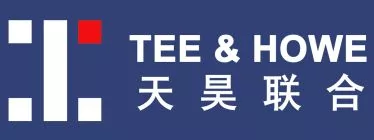- within Technology topic(s)
- with Inhouse Counsel
- with readers working within the Pharmaceuticals & BioTech and Retail & Leisure industries
On 3 August 2021, the CNIPA published yet another draft revisions to the CN Patent Examination Guidelines (the Guidelines). The deadline submit comments to the CNIPA is today (22 September 2021). I am honored to be able to work with the AIPLA and the IPO to submit comments to the CNIPA, not by myself alone of course, but with the help of many people (including Kurtis, Ed (two Eds), Fan, Lili, Kenny, Jennifer, Aaron, Mike, Steve, Zhengyu, Dalei).
First of all, these draft revisions comprise more than 230 pages. To me, it is already a significant achievement to be able to read through all of the revisions, analyze them, and provide comments within about 1.5 months.
Secondly, it appears that the CNIPA is revising the Guidelines every nine months. I personally hope that we could have more time to review and comment in the future.
The below are my views on these draft revisions. Only major points, in my view, are included, with the major focus on drug patent term extension, patent term compensation, and design patents.
Drug patent term extension (PTE)
The draft revisions restrict that only patents of the following drugs could obtain PTE according to the NMPA classification system effective since 1 July 2020:
- Innovative chemical drugs class 1, innovative vaccines class 1, and innovative biological products class 1, that are, drugs that have not been marketed in China.
- Improved new drugs as below:
a) Chemical drug
- 2.1 Chemical drugs that contain esterified known active ingredients, or salt of known active ingredients
- 2.4 Chemical drugs for new indications that contain known active ingredients.
b) Preventive biological drugs class 2.2, vaccine with strain improvement
c) Therapeutic biological drugs class 2.2, for new indications of improved already marketed products.
d) Chinese medicine class 2.3, for new indications of Chinese medicine.
That is, the following improved new drugs do NOT appear to be able to obtain PTE:
· Chemical drugs
- 2.1 Drugs that contain an optical isomer of known active ingredients obtained by resolution or synthesis, or change in acid group, basic group, or metallic element of known active ingredients of salt, or formation of other non-covalent bond derivatives (e.g., complex, chelate or clathrate), and have significant clinical advantages.
- 2.2 Drugs that contain known active ingredients with new dosage form (including new drug delivery system), new formulation process or new route of administration, and have significant clinical advantages.
- 2.3 New compound preparations that contain known active ingredients and have significant clinical advantages.
· All biological products other than b) and c) above, including the below (only some are listed):
- 2.1 Vaccines that change the antigen spectrum or type on the basis of products already on the market at home or abroad, and have obvious clinical advantages.
- 2.3 A new multi-linked/multivalent vaccine composed of vaccines with similar products on the market.
- 2.1 Biological products that optimize their dosage form and route of administration on the basis of products already on the market, and have obvious clinical advantages.
- 2.4 On the basis of marketed products, biological products with major technological improvements, such as recombinant technology to replace biological tissue extraction technology, have obvious clinical advantages after changing amino acid sites or expression systems and host cells compared with marketed products
It is not clear what is the legal basis of the above restrictions. At least I cannot see any of the above restrictions from the CN Patent Law 2020, and the CN-US Phase I Trade Agreement signed in 2020 (wherein China agreed to introduce PTE). May be this is the Chinese way of honoring agreements with foreign countries, which I am not wise enough to understand.
Patent Term Compensation (PTC)
It should be noted that PTC is available to all patents, not only drug patents, due to unreasonable delay at the CNIPA during prosecution. For a drug patent, PTC could be obtained in addition to PTE.
The calculation appears to be as below:
[4 years from the filing date (for PCT national phase entry in China, the date of entry) or 3 years from the date of filing request for examination (due 36 months from the earliest priority date), which ever is later] minus [all delays not qualified as unreasonable delays]
According to the draft, the following are delays not qualified as unreasonable delays:
- Delays caused by the applicant, including extensions obtained to respond to CNIPA's notices, request for deferring examination filed, restoration utilized.
- Suspension, mainly due to ownership dispute.
- Re-examination with amendments to the claims.
While 1. and 2. seems reasonable, 3. is somewhat questionable. This means that if the applicant has amended the claims during re-examination (i.e. the appeal procedure after a patent application is rejected), then no compensation for the time spent at re-examination (which could be 1 to 2 years according to my personal experience) would be awarded. The logic seems to be that if the applicant could win at the re-examination without amendments, this means that the CNIPA is wrong, and therefore patent term should be compensated as this is unreasonable caused by the CNIPA. However, in real life, it is not unusual that when facing an "interesting" examiner, applicants are somewhat strong-armed to amend the claims at various stage of examination, including re-examination. At the end of the day, most if not all applicants have little interest to "upgrade" their cases to re-examination. It would be interesting to see the explanations from the CNIPA on why amendments made when responding to office action at normal examination (i.e. when responding to an office action) could be compensated for patent term, while amendments made during re-examination could not.
Another controversy is the draft defines "the date of filing request for examination" is the date of the notification of the invention patent application entering substantive examination phase, which typically is issued at least two months after the request for examination is filed. This does not appear to be in line with the Chinese Patent Law (2020), which specifies "3 years from the date of request for examination" (in Article 42).
The major thorny point is that, unlike the US equivalence that is automatically provided by the USPTO at no cost (the applicant only has to be pay if wants to challenge the term adjustment calculated by the USPTO), according to the draft, a specific request has to be filed within 3 months from grant with the payment of a fee in China. This will surely deter many applicants from obtaining PTC. Again, China is required to implement PTC according to the CN-US Phase I Trade Agreement, and I am yet again not wise enough.
Designs
It is good to have partial design implemented by dotted lines. However, shadow lines are still not allowed.
Conversion between complete design to partial design, and vice versa, would be considered as non-allowable added matter. I do not understand why the conversion of dotted lines to solid lines is such a taboo in China.
Because of the rigid concept of not allowing conversion between complete design to partial design, and vice versa, and to avoid double patenting, when priority is claimed from a domestic Chinese design patent application, this prior Chinese design patent application would be deemed withdrawn after priority is successful claimed.
Other points
- Removal of 15-days mail period, which means applicant has 15 days less to respond to an office action. Not too bad for 1st OA with a 4-months deadline, but could hurt for re-examination notice with a 1-month deadline, particularly for foreign applicants.
- For change of applicant with PCT/IB/306 form issued at international stage, additional submission of assignment may no longer required when entering the Chinese national phase, except for special circumstances including Chinese entity assigning to a foreign entity.
- At invalidation proceedings, evidence formed outside of China may no longer require legalization.
- For utility model or design patent patentability evaluation report (required for enforcement), even potential infringers could ask for such a report from the CNIPA. At present, only the patentee and the licensee could ask for this report.
Final remarks
While there are some worrying changes, the draft revisions also have many positive moves. It is hopeful that the guidelines is evolving to a positive direction.
The content of this article is intended to provide a general guide to the subject matter. Specialist advice should be sought about your specific circumstances.
[View Source]

